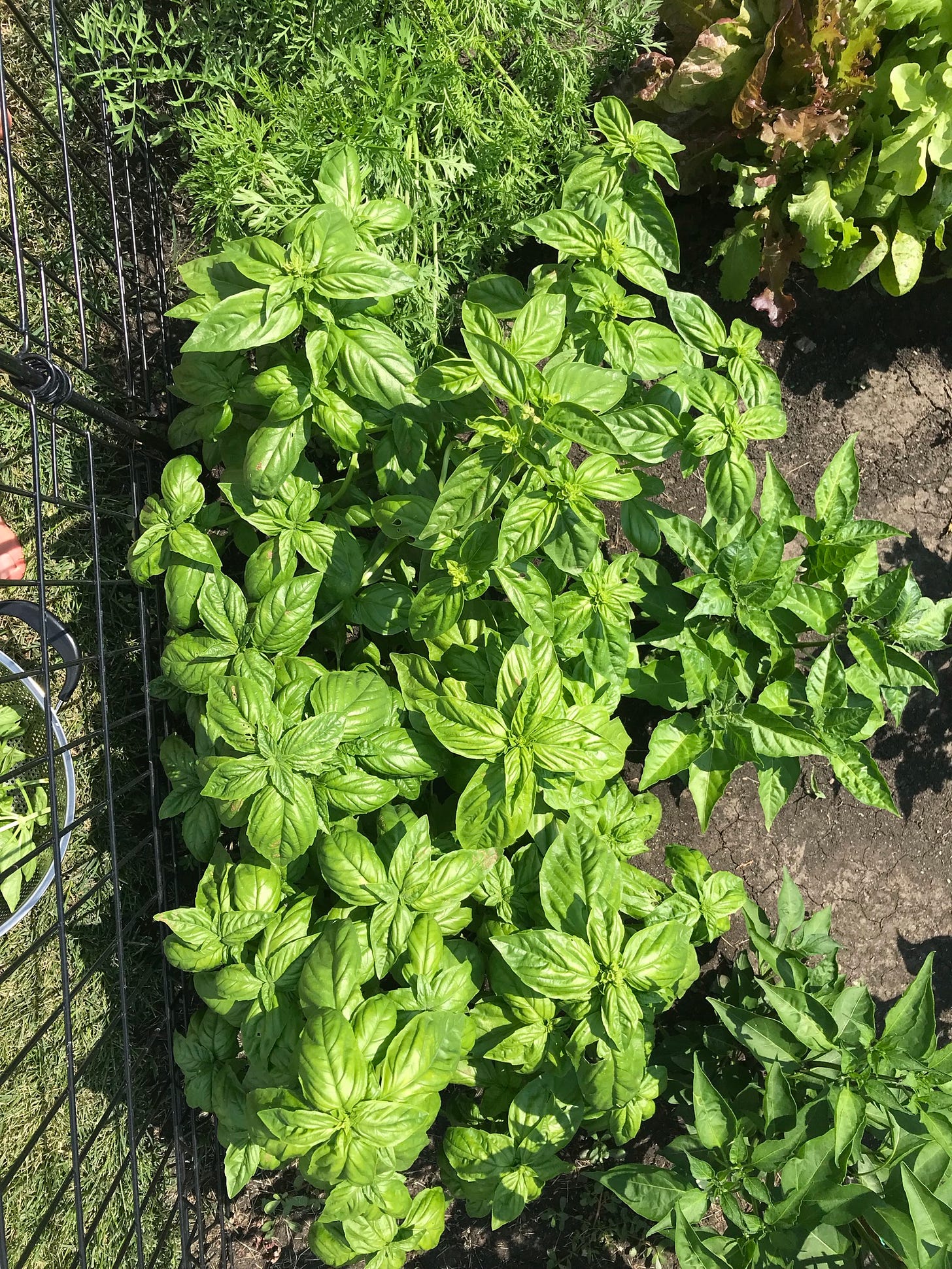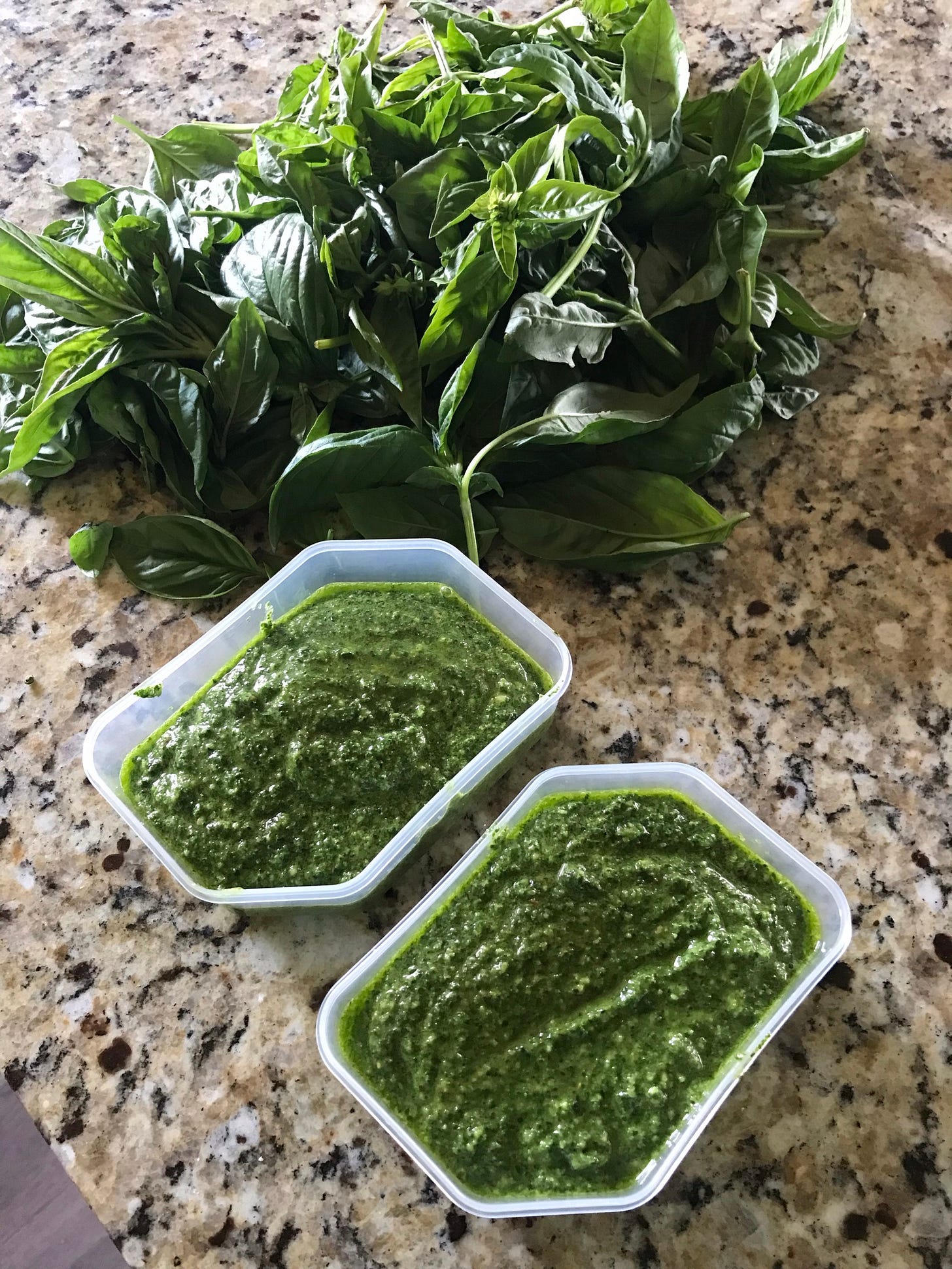Harvesting basil for pesto (07/05/21)
The basil plants that were sown indoors in late March and transplanted outside to the garden as small plants have now grown into spherical bushes around 2 feet in diameter. This is a good plant size for performing the first basil pruning that will help to both keep the plants compact and encourage dense branch formation for sustained basil yields for the rest of the growing season. If pruned poorly, basil plants will cease growing new leaves quickly, resulting in lower leaf yields. An example of poor basil pruning is shearing the plants at a consistent height, as one would do with a tightly clipped hedge. This kind of pruning neglects the new growth points at every node that new branches will grow from if a particular stem is cut off.
Basil has opposite branching, which means that at every node (branching point) along the stem, there are two branches immediately opposite each other. The stem just above the node that should be targeted for pruning to encourage new growth to spring rapidly from the node below. I typically look for nodes that are 4-6 inches below the unpruned canopy of the basil plant to target for pruning. Pruning can be accomplished by either cutting or pinching the stem immediately above a node.

Nodes should be identified and the stems immediately above should be pinched all around the plant so that the pruned canopy is at a consistent height. Because each basil node often contains leaves in addition to a nascent stem, the pruned basil plant when viewed from above should have a canopy full of leaves without bare stems poking through.

Basil plants pruned by pinching just above the node will grow new branches quickly, and can be pruned in this fashion roughly every two weeks if the plants are well watered and growing vigorously. Flowers will emerge for the remainder of the summer on these basil plants, and these flowers will need to be pinched as the buds begin to swell to keep the basil plant’s vegetative growth active instead of letting the plant go to seed.
Pesto is our primary use for basil. I am only growing Genovese basil, which is the optimal variety for making pesto or for use in sauces. Our favorite recipe is from Cook’s Country, which produces a pesto that has a nutty flavor that is light on garlic. One key to producing pesto that does not turn brown (oxidize) in storage is to blanch the leaves for 10-20 seconds in boiling salt water. This denatures the enzymes in the leaves that oxidize sugars, rendering them ineffective. It is also critical to remove the stem sections of basil and use only the leaves, as the stems contain tannins which serve to dry the taste and darken the color of the pesto. These are nice attributes in wine, but not in pesto.

The result is a pesto that is even greener then the basil leaves used to make it. This recipe yields just shy of 2 cups pesto for every 4 ounces of basil leaves harvested. It has a brilliant emerald green color and maintains this color when stored in the fridge for a week. And if you end up with more pesto than you can eat at once (as we do starting in late July), just pour additional olive oil on top of this pesto and freeze it. It can be unfrozen during the winter months with most of its color and flavor intact.




